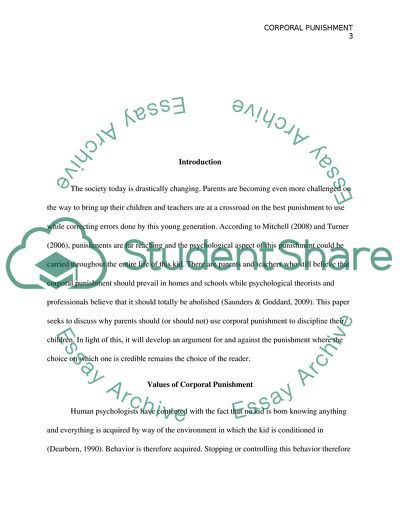Cite this document
(Acceptability of Corporal Punishments Literature review Example | Topics and Well Written Essays - 1250 words, n.d.)
Acceptability of Corporal Punishments Literature review Example | Topics and Well Written Essays - 1250 words. https://studentshare.org/sociology/1807585-should-parents-discipline-their-children-by-using-corporal-punishment-techniques-such-as-spanking-or-is-a-nonphysical-approach-more-conducive-to-raising-mentally-and-emotionally-healthy-children
Acceptability of Corporal Punishments Literature review Example | Topics and Well Written Essays - 1250 words. https://studentshare.org/sociology/1807585-should-parents-discipline-their-children-by-using-corporal-punishment-techniques-such-as-spanking-or-is-a-nonphysical-approach-more-conducive-to-raising-mentally-and-emotionally-healthy-children
(Acceptability of Corporal Punishments Literature Review Example | Topics and Well Written Essays - 1250 Words)
Acceptability of Corporal Punishments Literature Review Example | Topics and Well Written Essays - 1250 Words. https://studentshare.org/sociology/1807585-should-parents-discipline-their-children-by-using-corporal-punishment-techniques-such-as-spanking-or-is-a-nonphysical-approach-more-conducive-to-raising-mentally-and-emotionally-healthy-children.
Acceptability of Corporal Punishments Literature Review Example | Topics and Well Written Essays - 1250 Words. https://studentshare.org/sociology/1807585-should-parents-discipline-their-children-by-using-corporal-punishment-techniques-such-as-spanking-or-is-a-nonphysical-approach-more-conducive-to-raising-mentally-and-emotionally-healthy-children.
“Acceptability of Corporal Punishments Literature Review Example | Topics and Well Written Essays - 1250 Words”. https://studentshare.org/sociology/1807585-should-parents-discipline-their-children-by-using-corporal-punishment-techniques-such-as-spanking-or-is-a-nonphysical-approach-more-conducive-to-raising-mentally-and-emotionally-healthy-children.


